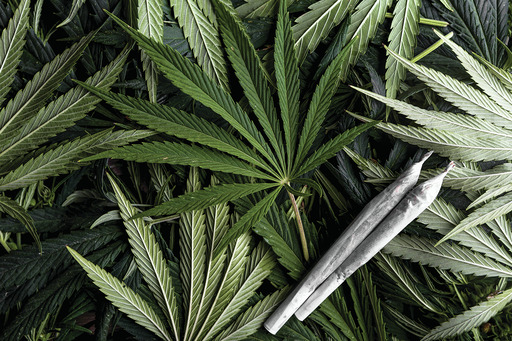Adam Prudhomme
Beaver Staff
Greater Napanee residents voiced their support for opting in to retail cannabis stores on Thursday night, with all but one of those who spoke at the special meeting held at South Fredericksburgh Hall asking council to opt in.
Greater Napanee chief administrative officer Ray Callery laid out some of the guidelines for retail cannabis stores should they be allowed into the municipality. That included some of the restrictions of locations on where a cannabis store could and couldn’t be established in relation to areas, such as being set back at least 150 metres from a school. He also noted council would have 15 days to review an application, which would still be bound to provincial legislation and the province may not heed the town’s suggestions on those applications.
About 30 people attended the special meeting, which was meant to help guide Greater Napanee town council’s decision, which must be made no later than the evening of Jan. 22. That included a deputation from Kingston, Frontenac, Lennox and Addington Public Health, the only agency to pre-register before the meeting.
“We hear often from the community that cannabis doesn’t present the same amount of impact as alcohol, tobacco and opioids and that cannabis isn’t actually an issue of concern,” said Sarah Tryon, a public health promoter with KFLA Public Health. “However the risks and harms and economic impacts of cannabis are not insignificant in particular among the vulnerable population need to be considered.”
She noted that reported cannabis use is three times higher among youths compared to adults and is the second highest drug used among those in Grades 7-12, checking in behind only alcohol.
“This is a concern given the critical brain development that is taking pace during that stage,” she stated.
“Opting out does not decrease its impact on the community,” said Tryon. “Further it will maintain the demand for the illegal market. Some consumers will access cannabis through legal sources, however in the absences of legal outlets, the demand for illegal cannabis will remain.”
Tryon noted illegal cannabis is unregulated and the potency is unknown. It also carries a risk of being mixed with other toxins and mould.
Greater Napanee’s proximity to Tyendinaga was referenced several times throughout the evening, as it was noted most residents were just a 10 minute drive from 50 non-regulated outlets on the reserve.
“With respect to cannabis, in my career (as a former police officer) I can safely say that in terms of criminality, I dealt with alcohol related offenses 100 fold more than I did cannabis related,” said Paul Lansimaki, a resident who got up to speak before council. “As a former police officer, I’d like to see law abiding citizens have a safe location to get something that they’re going to get anyway.”
Lansimaki also made it clear he currently works for VIVO Cannabis, a local licensed producer but said he made his comments as a citizen.
“I’m really uncomfortable with the timelines,” said Hans Bichsel, the lone resident who spoke that wasn’t in favour of opting in at this time. “When I read the time they gave (council), and how little is known and how much is unknown, it reminds me a little bit of door-to-door sales people. They give you this deal for today but you have to make a decision now.”
Council is expected to make its decision at the Jan. 22 regular council meeting. Across the province, municipalities are opting in at a rate of about two to one. Municipalities that ‘opt in’ prior to Jan. 22 have been promised potential funding from the provincial government. For a municipality to opt out, they must make a formal submission to the province that indicates their decision. Those that say nothing are considered ‘in’, though most municipalities make the formal motion of opting in to make their intentions clear.

